Book Review: Queen of Cups: Part 1: by James Durose-Rayner
 Queen of Cups is the final instalment of the trilogy that includes, I Am Sam and itv7 and differs from the first two books is that it is in two parts.
Queen of Cups is the final instalment of the trilogy that includes, I Am Sam and itv7 and differs from the first two books is that it is in two parts.
As with I Am Sam and itv7, Queen of Cups is a mix of the fictional word of central character Lee Janes and a factual exploration of aspects of the history of Arsenal FC. This time the focus is on the years of ex-England and Wolves player Billy Wright and his difficult period as manager at Highbury (1962-1966) and that of Terry Neil who was in the hot-seat for the Gunners from 1976 to 1983. Woven into the story of the Neil era are tales of unrest, politics and poor management as players such as Alan Ball, Liam Brady, Alan Hudson and Malcolm MacDonald came and went from the Marble Halls of N5. However, the author also looks to touch on other football topics, so that for instance the continuing problems at Blackpool FC between fans and owner has an airing.
Away from the football, Lee Janes’ businesses in the form of the itv7 channel, studios and music company continue to be successful and this story is told through chapters from the central character, longtime best friend Sooty and one of the television staff Abi. What these chapters also do is further delve into the past of Lee, his wife Emily, ex-wife Jeanette and Sooty, providing more glimpses into their backstory, giving the reader a more complete picture of what makes the central protagonists tick and its impact on their present-day life.
Indeed, the slowly more considered and reflective storytelling within Queen of Cups reveals the insecurities and vulnerabilities of the main characters that is only hinted at within I Am Sam and itv7. This allows the reader, as in the earlier parts of the trilogy, to fully engage with both the cast and plot-lines.
If Queen of Cups was a match you were watching, you would be more than happy with the opening period and the entertainment so far, but now having returned to your seat in the stands after the break, it’s time for the second-half and you just can’t wait to see how it turns out.
 itv seven is the second part of a trilogy which began with
itv seven is the second part of a trilogy which began with 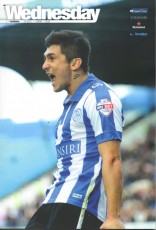 For my last Capital One Cup game at Fulham talk was of how it felt unlike a match-day with a trek across London during rush-hour to witness a game in a ground less than half full.
For my last Capital One Cup game at Fulham talk was of how it felt unlike a match-day with a trek across London during rush-hour to witness a game in a ground less than half full. There was a hint of fog in the night sky which swirled in the Hillsborough floodlights and added to the feeling that it might be a night to remember. A quick beer was had and then it was into the Kop, with the crowd, noise and anticipation levels building nicely.
There was a hint of fog in the night sky which swirled in the Hillsborough floodlights and added to the feeling that it might be a night to remember. A quick beer was had and then it was into the Kop, with the crowd, noise and anticipation levels building nicely. Hillsborough was delirious at the half-time whistle with discussions at the break centring on the fact that surely this was a lead that Wednesday couldn’t throw away.
Hillsborough was delirious at the half-time whistle with discussions at the break centring on the fact that surely this was a lead that Wednesday couldn’t throw away.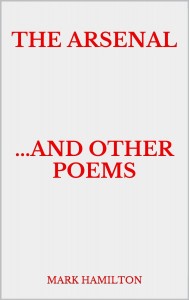
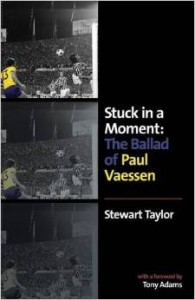 Paul Vaessen was at Arsenal Football Club from 1977/78 until 1982/83. During those six seasons he started in just 27 games first team games, with 14 additional appearances from the bench, scoring 9 goals.
Paul Vaessen was at Arsenal Football Club from 1977/78 until 1982/83. During those six seasons he started in just 27 games first team games, with 14 additional appearances from the bench, scoring 9 goals. When England manager Roy Hodgson recently suggested that he would be monitoring the progress of Manchester United’s Belgian youngster Adnan Januzaj, the issue of international player eligibility was once more in the news.
When England manager Roy Hodgson recently suggested that he would be monitoring the progress of Manchester United’s Belgian youngster Adnan Januzaj, the issue of international player eligibility was once more in the news.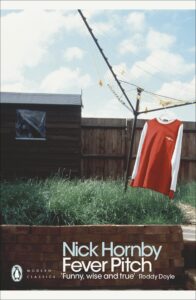 With the end of the 1991/92 season, the format of football in England shifted seismically; Leeds United were the last Football League Division One Champions and in 1992/93 the FA Premier League was born, to change forever the soccer landscape in this country. 1992 also saw the release of Fever Pitch by Nick Hornby, which transformed the way football literature was viewed to become a seminal work in sports writing.
With the end of the 1991/92 season, the format of football in England shifted seismically; Leeds United were the last Football League Division One Champions and in 1992/93 the FA Premier League was born, to change forever the soccer landscape in this country. 1992 also saw the release of Fever Pitch by Nick Hornby, which transformed the way football literature was viewed to become a seminal work in sports writing. Where do you start with this review? In finishing reading this book and reflecting on the experience, my views and thoughts have been many and varied, which has subsequently made the task of writing a critique a difficult one. So let’s start with some basics.
Where do you start with this review? In finishing reading this book and reflecting on the experience, my views and thoughts have been many and varied, which has subsequently made the task of writing a critique a difficult one. So let’s start with some basics.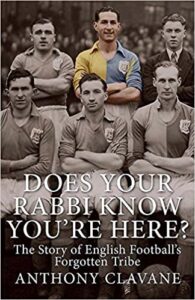 When I was growing up, the football book market was pretty much restricted to lazy and often ‘ghosted’ biographies, where ‘the boys done good’ mentality was about as incisive as it got. Thankfully, as the early 1990’s emerged this changed, with books such as “Fever Pitch” by Nick Hornby paving the way for a better expression of the fan experience and the beautiful game in a wider context. Following in this vein Anthony Clavane wrote the Award winning “Promised Land: A Northern Love Story”, which tells the tale of the rise and fall of Leeds United, intertwined with that of the City of Leeds and of the Jewish community.
When I was growing up, the football book market was pretty much restricted to lazy and often ‘ghosted’ biographies, where ‘the boys done good’ mentality was about as incisive as it got. Thankfully, as the early 1990’s emerged this changed, with books such as “Fever Pitch” by Nick Hornby paving the way for a better expression of the fan experience and the beautiful game in a wider context. Following in this vein Anthony Clavane wrote the Award winning “Promised Land: A Northern Love Story”, which tells the tale of the rise and fall of Leeds United, intertwined with that of the City of Leeds and of the Jewish community. Saturday 18 February 2012 (12.00pm)
Saturday 18 February 2012 (12.00pm) The last game of the day will see an Arsenal team fresh from a mauling in Milan, take on Sunderland who recently have enjoyed a resurgence under Martin O’Neill. The Sunderland boss will tell his team to forget about the 2-1 loss they suffered only last week to The Gunners and will hope to compound an awful week for Arsene Wenger by dumping Arsenal out of the Cup. Black Cats fans of a certain age will remember the 2-1 win against Arsenal in the Semi-Final in 1973 when Sunderland went on to lift the Cup after beating Leeds United in the Final. I’m going for Sunderland to take this one, as once more another season for The Gunners come to nothing.
The last game of the day will see an Arsenal team fresh from a mauling in Milan, take on Sunderland who recently have enjoyed a resurgence under Martin O’Neill. The Sunderland boss will tell his team to forget about the 2-1 loss they suffered only last week to The Gunners and will hope to compound an awful week for Arsene Wenger by dumping Arsenal out of the Cup. Black Cats fans of a certain age will remember the 2-1 win against Arsenal in the Semi-Final in 1973 when Sunderland went on to lift the Cup after beating Leeds United in the Final. I’m going for Sunderland to take this one, as once more another season for The Gunners come to nothing.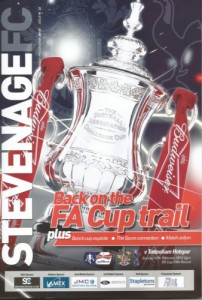 Stevenage and Tottenham were involved a real old ding-dong of a game which belied the final score-line of 0-0. Whilst there was not a great many shots on goal, it was an all-action Cup-tie. Spurs did have the ball in the net and were perhaps unfortunate that Scott Parker was on the goal-line as he deflected in Saha’s goal bound effort. That would have been harsh on Stevenage who served a replay.
Stevenage and Tottenham were involved a real old ding-dong of a game which belied the final score-line of 0-0. Whilst there was not a great many shots on goal, it was an all-action Cup-tie. Spurs did have the ball in the net and were perhaps unfortunate that Scott Parker was on the goal-line as he deflected in Saha’s goal bound effort. That would have been harsh on Stevenage who served a replay.